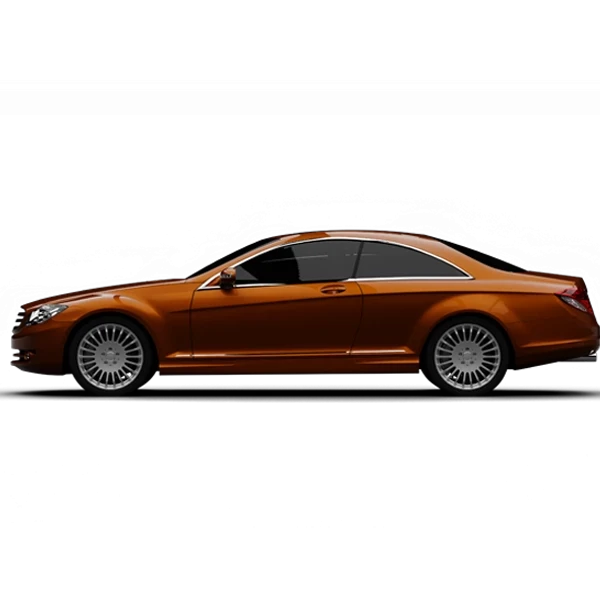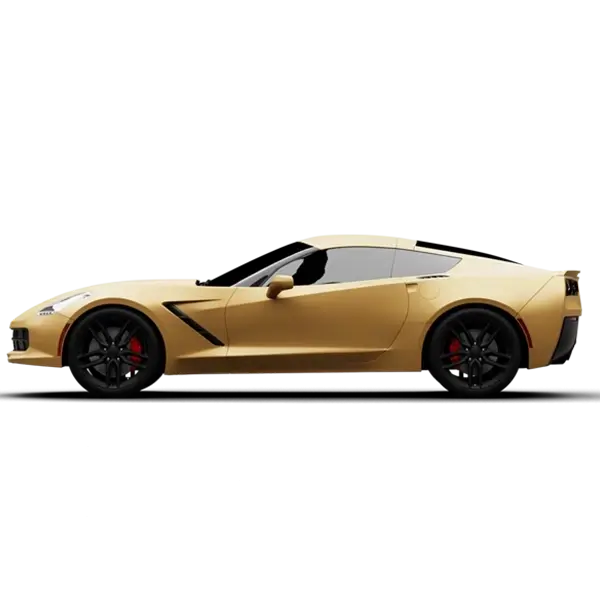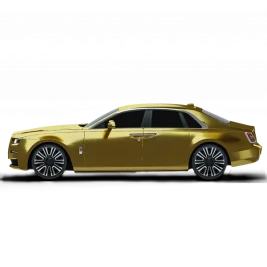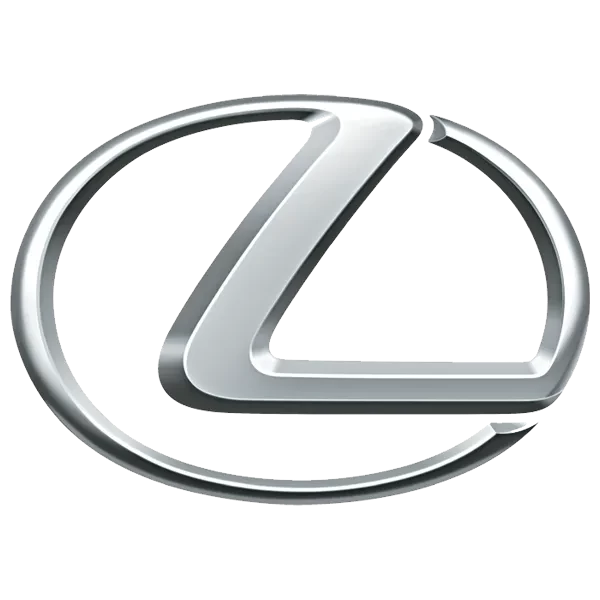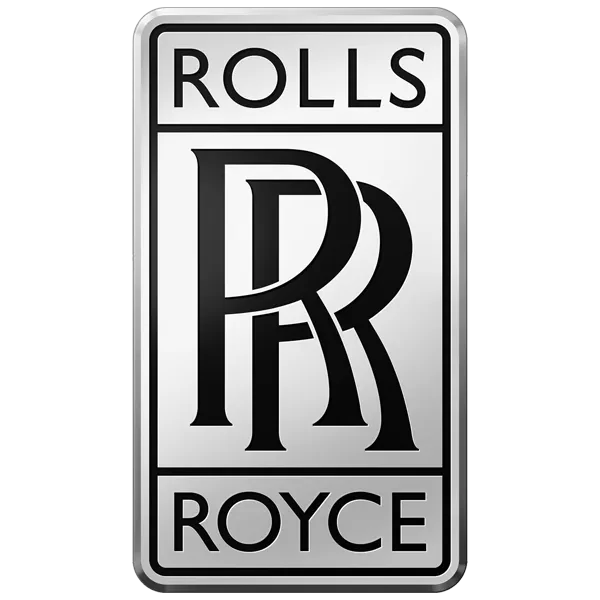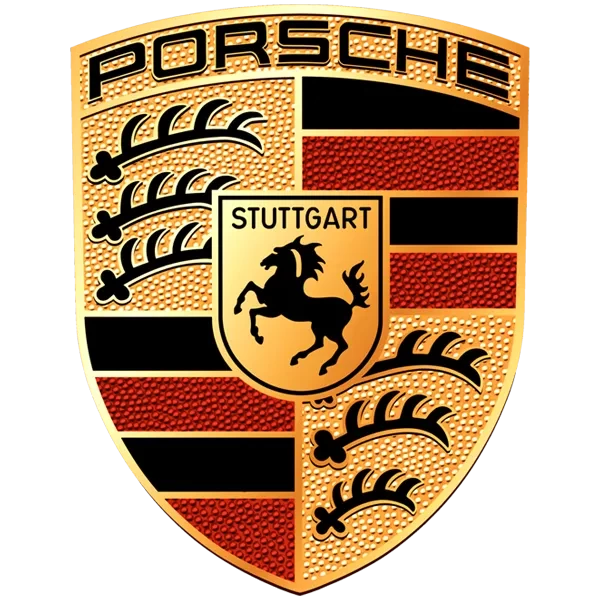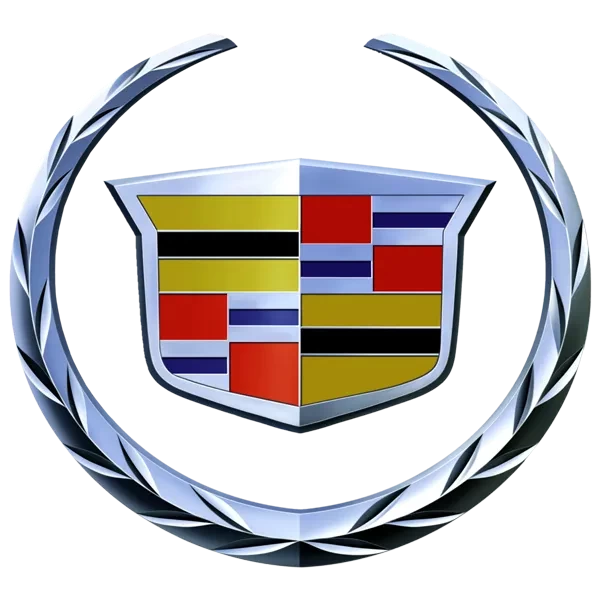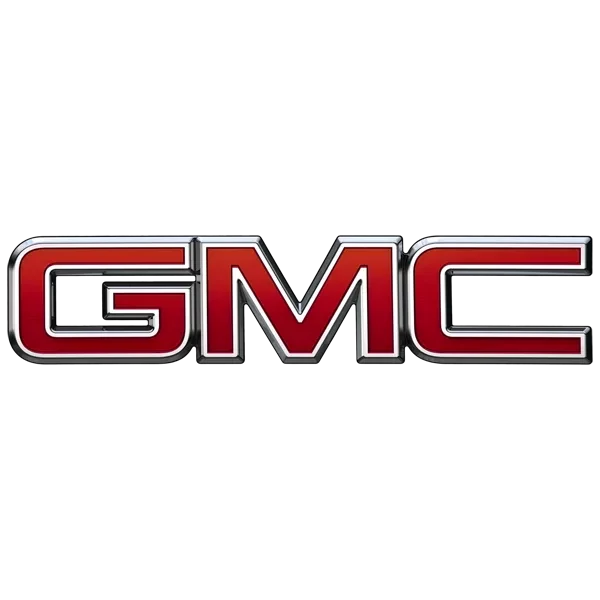13 Most Common Ferrari Problems and Solutions

Ferrari represents more than just an automobile; it is a legacy defined by passion, speed, and uncompromising Italian performance. Yet, owning this icon requires a commitment as intense as the driving experience itself. Understanding Ferrari's most common problems and solutions is absolutely crucial for a seamless ownership.
Become familiar with Ferrari's 13 most crucial issues to anticipate maintenance needs, master the true cost of exhilarating ownership, and keep your supercar a flawless testament to Maranello's engineering artistry. Dive in, take control, and command the roads, staying clear of unexpected hurdles.
Engine & Drivetrain
1. Transmission/Gearbox Failures
What Happens:
Your Ferrari loses its ability to reliably select or hold a gear, leading to a sudden and critical loss of drive. In older F1 automated manual systems, this often manifests as the hydraulic actuator system failing to engage the single clutch. It leaves the gearbox stuck in neutral or a single gear. In newer DCT models, the internal Mechatronic unit (the brain of the gearbox) experiences a failure of critical speed or pressure sensors. It causes the transmission's control unit to disengage all clutches as a safety measure, resulting in a total immobilization of the vehicle.
Affected Models:
F1 Gearbox: Ferrari 360, F430, 575M, 599.
DCT Gearbox (Getrag 7DCL750): Ferrari California/California T, 458 Italia, FF/GTC4Lusso.
Symptoms:
Slow, jerky, or inconsistent gear shifts; frequent warning messages; the F1 pump running often; the car failing to engage a gear upon starting.
Flashing gear indicator light; car stuck in neutral or a specific gear; delayed or harsh engagement when shifting into Drive or Reverse; failure code from the gearbox ECU.
Grinding noises or a burning smell emanating from the transmission tunnel.
Common Causes:
Failure of the F1 hydraulic pump, worn clutch position sensor, or leaky clutch actuator seals.
Thermal stress and electrical failure of the internal speed/pressure sensors within the mechatronic unit (often due to heat and fluid ingress).
Excessive low-speed maneuvering (riding the clutch/slipping gears in traffic) which rapidly accelerates clutch plate wear.
Insufficient or neglected transmission fluid maintenance causes premature internal component wear.
Solutions:
Replacement of the F1 pump motor/relay or a rebuild of the hydraulic actuator. Clutch replacement based on wear reading (checked regularly via diagnostic scan).
Replacement of the specific failed internal sensor kits or the solenoid valve body. Regular and aggressive fluid changes are recommended to extend component life.
For F1 models, shift to neutral when stopped and avoid creeping in traffic.
Estimated Repair Cost:
F1 System Pump/Actuator Repair: AED 8,000 – AED 25,000+
Clutch Replacement (F1 or DCT): AED 18,000 – AED 35,000+
DCT Internal Sensor/Mechatronic Repair: AED 15,000 – AED 40,000+
Full DCT Replacement: Can exceed AED 75,000 – AED 150,000+
Related Article: Most Common Bugatti Problems and Solutions
2. Engine Fluid Leaks
What Happens:
Ferrari engines operate at extremely high temperatures and pressures. This causes the various seals and gaskets (rubber, paper, or silicone) that contain critical fluids to dry out, shrink, and eventually fail over time. The leak can be slow (oil dripping onto the garage floor) or catastrophic (a burst coolant line). If the fluid loss is severe or goes unaddressed, it leads to a critical drop in oil pressure or engine overheating, which can cause severe, irreversible engine damage requiring a full rebuild.
Affected Models:
Ferrari 360, F430, California, 458, and older V12S (550/575/612).
Symptoms:
Spots of dark engine oil or colored coolant (red/pink/green) left under the car after parking.
Oil or hydraulic fluid dripping onto hot exhaust components (headers or mufflers) and burning off while driving.
Frequent need to top up engine oil, coolant, or F1/power steering fluid, often indicated by dashboard warnings.
White or blue smoke emanating from the engine bay or rear of the vehicle due to fluid burning on hot surfaces.
Common Causes:
High engine heat and age cause elastomer seals (like valve cover gaskets, oil pan gaskets, or cam cover half-moons) to harden and fail.
The Rear Main Seal (RMS) leak is highly labour-intensive, as it requires the engine and gearbox to be separated (clutch out).
Oil leaking through the high-pressure solenoid connectors that adjust variable valve timing, common in F430/360.
Degradation or cracking of hoses, plastic expansion tanks, or the water pump seals due to pressure and heat.
Solutions:
Precise UV dye leak detection and pressure testing to pinpoint the exact source.
Replacement of the specific faulty gasket, seal, or brittle fluid line using updated OEM or high-quality aftermarket parts.
For the RMS leak, this repair is best performed when the clutch requires replacement to optimize labour cost.
Maintaining strict adherence to the manufacturer’s coolant and oil change intervals.
Estimated Repair Cost:
Minor Gasket/Hose Replacement: AED 3,000 – AED 7,000+
Major Engine Seal: AED 15,000 – AED 30,000+
Coolant Tank/Pump Repair: AED 4,000 – AED 10,000+
Solenoid/Variator Repair: AED 6,000 – AED 12,000+
3. Engine Overheating
What Happens:
The engine’s temperature rapidly rises above the normal operating range, often within minutes of a component failure. When the cooling system fails, coolant circulation stops, or the fluid level drops critically. This thermal spike causes the engine to enter a safety mode with reduced power. If driving continues, the extreme heat can lead to severe damage such as warped cylinder heads, blown head gaskets, or total engine seizure. Steam or smoke may be visible from the engine bay.
Affected Models:
Ferrari 360, F430, 458, FF, 612, F12.
Symptoms:
The temperature gauge climbs quickly and enters the red warning zone.
A dashboard warning light illuminates, often accompanied by a Low Coolant Level or general engine fault message.
Steam or a sudden release of fluid erupts from the engine cover or wheel wells.
The electric cooling fans fail to turn on or run constantly at maximum speed.
Common Causes:
Coolant Leaks: Degradation and cracking of plastic coolant expansion tanks, hoses, or pipe seals.
Thermostat Failure: The thermostat fails to open, preventing hot coolant from reaching the radiators for cooling.
Water Pump Failure: The pump’s internal impeller or its drive belt fails, stopping coolant circulation throughout the engine.
Radiator Blockage: The multiple front and side radiators get clogged with road debris, sand, or mineral deposits internally, severely restricting airflow.
Solutions:
Immediately pull over and shut down the engine to prevent thermal damage if a high-temp warning appears.
Pressure testing the cooling system to diagnose leaks in the hoses, expansion tank, or seals.
Replacement of the faulty component, such as the thermostat, water pump, or radiator fan assembly.
Regular coolant flushes and refills with the correct fluid type, and cleaning debris from the radiator faces.
Estimated Repair Cost
Cooling System Repair (Hose, Thermostat, Sensor): AED 2,500 – AED 6,000+
Water Pump/Radiator Fan Replacement: AED 5,000 – AED 12,000+
Radiator Replacement (per unit): AED 6,000 – AED 15,000+
Head Gasket/Engine Rebuild (Catastrophic): AED 35,000 – AED 100,000+
Related Article: Most Common Jeep Problems and Solutions
4. Clutch System Wear
What Happens:
The clutch disc’s friction material wears down to a critical level, causing a loss of mechanical grip between the engine and the gearbox. In F1 (single-clutch) models, this is a known wear item accelerated by low-speed maneuvers, like creeping in traffic, where the automated clutch slips excessively. In DCT (dual-clutch) models, excessive wear can occur on one or both clutch packs, leading to slippage in certain gears and requiring an internal gearbox repair to replace the wet clutch packs.
Affected Models:
High Wear Rate F1 System Ferrari 360, F430, 575M, 599.
Modern DCT System Ferrari California, 458 Italia, FF/GTC4Lusso, F12.
Symptoms:
Engine RPM rises sharply without a corresponding increase in speed (clutch slip), especially under hard acceleration.
A strong, distinct burning smell (friction material overheating) from the engine or transmission tunnel.
F1 Models Jerky, harsh, or slow gear changes; frequent need for F1 system diagnostics to read the remaining clutch life percentage.
DCT Models Hesitation or unexpected slippage when shifting; transmission warning messages appear on the dashboard.
Common Causes:
Driving Habits: Extensive use in stop-and-go city traffic where the automated system constantly engages and disengages the clutch.
Launch Control: Repeated aggressive use of launch control, which creates high initial clutch slip for maximum acceleration.
F1 System: Failure to shift the F1 car into neutral when stopped for periods longer than a few seconds.
High Mileage/Age: Simple end-of-life wear of the friction plate material.
Solutions:
Clutch assembly replacement (friction plate, pressure plate, and throw-out bearing) and a full clutch PIS (point of initial slip) calibration via diagnostic tool.
Internal DCT clutch pack replacement, which often involves specialized gearbox removal and splitting the Mechatronic unit.
Avoid creeping or 'riding' the clutch; manually shift F1 cars into neutral at stops to minimize wear.
Monitor clutch wear percentage regularly, which is standard procedure during Ferrari service.
Estimated Repair Cost:
F1 Clutch Replacement: AED 18,000 – AED 35,000+
DCT Clutch Replacement (Internal Gearbox Work): AED 35,000 – AED 60,000+
Flywheel Replacement (if required): AED 8,000 – AED 15,000+
5. Engine Mount Failure
What Happens:
Engine mounts secure the engine and transmission to the chassis while damping vibrations. They are typically made of rubber or a fluid-filled hydraulic system. Over time and due to heat, the rubber degrades, cracks, and collapses, losing its ability to absorb movement. This allows the high-performance engine to shift excessively, causing noticeable vibration and potentially damaging other components.
Affected Models:
Ferrari 360, F430.
Symptoms:
Increased Vibration: Excessive shaking felt through the steering wheel, chassis, and dashboard, especially at idle or under load.
Lurching/Clunking Noises: A noticeable thud, clunk, or bang when accelerating hard, braking, or shifting gears, caused by the engine block hitting the surrounding frame or components.
Engine Movement: The engine visibly or audibly lurches or twists when starting the car, putting it in gear, or shutting it off.
Poor Shifting: In F1 models, excessive engine movement can interfere with the F1 gearbox's precise shifting mechanism, leading to rough gear changes.
Visual Wear: Cracks, tears, or compression in the rubber mount material visible upon inspection, or fluid leaking from hydraulic mounts.
Common Causes:
The rubber naturally deteriorates over time, and the extreme heat generated by a mid-mounted Ferrari engine significantly accelerates this process.
Hard acceleration and abrupt braking put high stress on the mounts, speeding up their failure.
Leaking engine oil or other fluids can contaminate and break down the rubber components of the mount.
Solutions:
Replace the failed engine and/or transmission mounts with new OEM or high-quality aftermarket units. For models like the F430/360, this is considered a relatively straightforward repair that can be done in a few hours by an experienced technician.
A routine visual and physical inspection of the mounts should be part of the car's regular service schedule.
On known problematic models like the 360 and F430, opt for preventive replacement once the car hits the 10-year mark to avoid secondary damage.
Estimated Repair Cost:
Engine Mount Parts (per mount): AED 1,000 – AED 2,500+
Total Replacement Cost: AED 4,000 – AED 10,000+
Related Article: Most Common Mercedes-Benz Problems and Solutions
6. Internal Carbon Build-Up
What Happens:
Internal carbon build-up is a common issue in modern engines. It usually affects Gasoline Direct Injection (GDI) engines, such as the engines found in the Ferrari 458 and 488 (and the FF V12). Unlike older Port Fuel Injection (PFI) engines, where fuel washed over the intake valves, GDI injects fuel directly into the cylinder. This means fuel detergents never touch the intake valves, allowing oil vapour and combustion by-products to bake onto them, creating hard, restrictive carbon deposits.
Affected Models:
Ferrari 458 Italia, 488 GTB/Spider, FF (6.3L V12 GDI).
Symptoms:
The engine runs poorly, especially when cold, due to disrupted airflow and an uneven air-fuel mix.
Loss of horsepower and sluggish acceleration as the carbon deposits choke the intake ports.
Carbon deposits in the combustion chamber can create hotspots, causing pre-ignition or detonation (pinging).
Often triggered by misfire codes (P0300 - P0308) or performance-related fault codes.
The engine struggles to operate efficiently and consumes more fuel.
Common Causes:
The main cause, that the fuel's detergent properties do not wash and clean the intake valves.
Oil and uncombusted hydrocarbons from the crankcase are recirculated into the intake manifold via the PCV system, where they adhere to the hot intake components.
Frequent short trips prevent the engine from reaching a high enough temperature to naturally burn off some deposits.
Using non-approved or low-quality engine oil can increase oil vapour content and hasten carbon formation.
Solutions:
Walnut Blasting (Mechanical Cleaning): The most effective remedy is to remove the intake manifold and blast the intake ports and valves with fine crushed walnut shells. The shells are abrasive enough to remove the hard carbon but soft enough not to damage the metal components.
Oil Catch Can Installation: Installing an aftermarket oil catch can in the PCV system traps oil vapour before it reaches the intake manifold, significantly slowing the rate of future carbon build-up.
Italian Tune-up: Occasionally driving the car at higher RPMs/load on a highway can help reach temperatures that reduce deposit formation.
Fuel/Injector Cleaners: Using high-quality, top-tier fuel and premium fuel system additives can help keep the fuel injectors clean, but they cannot clean the carbon from the intake valves themselves in a DI engine.
Estimated Repair Cost:
Walnut Blasting/Intake Decarbonization Service: AED 4,000 – AED 8,000+
Oil Catch Can Installation: AED 1,500 – AED 3,000 (part and installation)
Electronics & Power
7. Electrical System Malfunctions
What Happens:
Ferrari vehicles are equipped with complex, high-voltage electrical architecture and numerous sensors. When a fault occurs, it can range from minor interior annoyances to critical engine or transmission failure. Issues often involve sensor failure, wiring harness degradation, or problems within the Body Control Module (BCM) or Engine Control Unit (ECU). These failures lead to incorrect data reporting or communication errors, causing various systems—engine, gearbox, suspension, or interior features—to malfunction or shut down as a safety measure.
Affected Models:
Ferrari 360, F430, 575M, 458 Italia, California, FF/GTC4Lusso.
Symptoms:
Check Engine Light (CEL), Airbag, ABS, or traction control warnings appear and disappear seemingly without reason.
Failure of the power windows, the infotainment system, or the instrument cluster's TFT screens.
The car fails to start after being parked for a few days, indicating a parasitic draw or a module not fully shutting down (often a BCM or TCU issue).
Intermittent communication errors or sensor failures that mimic the symptoms of mechanical transmission failure.
Common Causes:
Wiring Harness Degradation: Heat from the engine bay or age can cause wiring insulation to become brittle, crack, and short-circuit.
Sensor Failure High: temperatures and vibrations often lead to the premature failure of essential sensors (e.g., speed, position, or temperature sensors).
Software Glitches: Electronic Control Units (ECUs) sometimes require dealer-level software updates or resets to clear persistent communication faults.
Low Voltage/Battery: Ferraris are highly sensitive to low battery voltage. A weak battery can trigger a cascade of false warning lights and system failures.
Solutions:
Always use a trickle charger/battery tender when the car is parked for more than a couple of days to prevent low voltage-induced faults.
Use official Ferrari diagnostic tools (e.g., SD3/DEIS) to pinpoint the exact failing sensor or communication error.
Address brittle or compromised wiring harnesses, especially near the engine or transmission.
In some cases, replacing or reprogramming a faulty control module (BCM, ECU, or TCU) is necessary.
Specialized cleaning or refinishing of the interior plastic parts is required to remove the sticky coating.
Estimated Repair Cost:
Diagnostic/Software Reset: AED 800 – AED 2,500
Sensor/Relay Replacement: AED 2,000 – AED 6,000+ (depending on accessibility)
BCM/ECU/TCU Replacement: AED 10,000 – AED 30,000+
Sticky Button Refinishing (Full Interior): AED 4,000 – AED 12,000
Related Article: Most Common Range Rover Problems and Solutions
8. Battery and Charging System Problems
What Happens:
Ferraris utilize complex electrical systems and numerous ECUs (Engine Control Units) that require a stable, consistent voltage supply. A weak battery or a failing charging system (alternator) leads to low voltage in the system. When voltage drops, the sensitive electronics—especially the transmission, engine, and alarm ECUs—malfunction, often resulting in immobilization or random faults. The car simply won't start, or it will shut down unexpectedly.
Affected Models:
Ferrari California, 458, 488, and F8
Symptoms:
Non-Start Condition: The engine cranks slowly or not at all, often with a rapid clicking noise.
Electrical Gremlins: Random, non-specific warning lights on the dash (e.g., 'Low Voltage', 'A/C Fail', 'Suspension Malfunction').
Rapid Battery Drain: The car battery dies after sitting for only a few days or weeks, even if it's relatively new.
Alternator Failure: The battery light or a charging system warning remains illuminated while driving, and the voltage gauge reads low (below 13.5V).
Common Causes:
Parasitic Draw: The complex ECUs and anti-theft systems draw a constant, small amount of power even when the car is off, causing the battery to drain rapidly if unused.
Neglect of Trickle Charger: Failure to connect the car to the factory-supplied battery conditioner (trickle charger) when parked for more than a few days. This is the single biggest cause of electrical issues.
Aging Battery: High heat exposure and time naturally reduce a battery's capacity and lifespan (typically 2-4 years in hot climates).
Alternator Diode/Regulator Failure: The alternator fails to produce the necessary voltage (13.8V–14.4V) to replenish the battery while the engine is running.
Solutions:
Mandatory Trickle Charge: Always keep the car connected to a quality trickle charger (battery conditioner) when stored.
Battery Replacement: Replace the battery at the first sign of weakness, ensuring a high-quality OEM or equivalent unit is used.
Alternator Repair/Replacement: Diagnose the charging system; replace the alternator or its internal voltage regulator/diodes if the output is consistently low.
System Check: Have a specialist check for any unusual "parasitic draws" in the wiring harness that might be unnecessarily draining the battery.
Estimated Repair Cost:
Battery Replacement: AED 1,500 – AED 3,500+
Alternator Replacement: AED 4,500 – AED 8,000+
Diagnostics for Parasitic Draw: AED 500 – AED 1,500
Trickle Charger (Conditioner): AED 500 – AED 1,200
Chassis & Running Gear
9. Suspension and Steering Component Wear
What Happens:
Ferrari suspension systems—composed of multi-link control arms, rubber bushings, ball joints, and advanced shock absorbers (often adaptive or MagneRide) experience accelerated wear due to their design for aggressive handling and the intense forces they manage. The rubber bushings and ball joints degrade and develop excessive play, compromising wheel alignment and stability. On modern cars, electronic shocks can leak fluid or have sensor failures, resulting in a loss of damping control or triggering a chassis warning light.
Affected Models:
Ferrari 360, F430, 458 Italia, 599, 599, F430 Scuderia, 458.
Symptoms:
Knocking/Clunking Noises: A clunk or knock sound coming from the wheel arches when going over small bumps, accelerating, or braking, which indicates play in a worn ball joint or degraded control arm bushing.
Loose or Vagueness in Steering: A perceived sloppiness or lack of precision in the steering feel, or the car pulling to one side, especially during braking.
Excessive Body Roll or Bounce: The car feels wallowy or bouncing multiple times after hitting a dip, suggesting failed shock absorbers (dampers).
Uneven Tire Wear: Scalloped or feathered wear patterns on the tire tread, a clear sign of incorrect wheel alignment due to worn suspension components.
Common Causes:
The natural breakdown, cracking, and hardening of the rubber control arm bushings due to age and exposure to high engine/brake heat.
Aggressive driving or track use that puts maximum stress on ball joints and bushings, accelerating mechanical wear.
Wear on the seals of the shock absorber (especially common with MagneRide), leading to a loss of damping fluid and reduced performance.
Suddenly, sharp impacts from poor road conditions can instantly damage control arms or cause leaks in sensitive shock components.
Solutions:
Replace the failed bushings (often done with high-quality polyurethane kits for durability) or the entire control arm assembly. An immediate four-wheel alignment is mandatory after component replacement.
Replace a leaking or failed electronic shock absorber (often recommended to replace in pairs). Specialist garages can sometimes rebuild or re-gas the expensive OEM dampers as a cost-saving measure.
Routine inspection of all rubber and mechanical suspension components during service to identify play before it causes secondary damage.
Estimated Repair Cost:
Control Arm Bushing/Ball Joint Replacement: AED 5,000 – AED 15,000+.
Electronic Shock Absorber (SCM) Replacement: AED 8,000 – AED 20,000+.
Full Suspension Overhaul (Four Corners): Can exceed AED 50,000 – AED 100,000+
Related Article: Most Common McLaren Problems and Solutions
10. Brake System Malfunctions
What Happens:
Brake system malfunctions in a Ferrari typically involve issues with the high-performance friction materials (pads/rotors) or a failure of the sophisticated electronic systems (ABS/EBD). This can lead to a sudden loss of stopping power, instability during braking, or the complete failure of the safety assist features. A common wear-related issue is the cracking or warping of high-stress brake rotors (especially Carbon Ceramic Brakes (CCB)) or the premature wear of brake pads due to extreme driving.
Affected Models:
Ferrari F430, 458, 488, F12, and newer models.
Symptoms:
Reduced Performance: A spongy or soft brake pedal that sinks to the floor, requiring much more force to slow the car, indicating low fluid or an air/leak issue.
Vibration/Pulsing: A shudder or pulsing felt through the brake pedal or steering wheel when braking, often caused by warped or cracked rotors
Abnormal Noises: A high-pitched squeal (often normal on cold CCBs or a worn pad indicator) or a loud grinding noise (metal-on-metal contact due to completely worn pads).
Warning Lights: Illumination of the ABS, EBD, or Brake System warning lights, often accompanied by a 'Brake System Failure' message or loss of traction control.
Unstable Braking: The car pulls sharply to one side when braking, indicating a seized calliper or a brake force imbalance.
Common Causes:
Brake Wear: Extreme driving or track use rapidly wears out brake pads and can cause thermal stress leading to cracks in the Carbon Ceramic Rotors.
Brake Fluid Neglect: Over time, brake fluid absorbs moisture, lowering its boiling point. Excessive heat from hard braking can cause the fluid to boil (brake fade), leading to a spongy pedal and failure.
ABS/EBD Sensor Failure: Corrosion or damage to a wheel speed sensor (ABS sensor) or a fault in the main hydraulic ABS pump/module unit.
Seized Callipers: In rare cases, a brake calliper can seize or stick, causing the pad to continuously rub against the rotor, leading to overheating, a burning smell, and uneven wear.
Solutions:
Friction Material Replacement: Replace worn pads immediately. Replace warped or cracked CCB rotors. Note that CCB rotors are typically a long-life ite,m but are extremely expensive to replace when they do fail.
Brake Fluid Flush: Flush and replace brake fluid (ideally with high-performance fluid) every 1-2 years to maintain a high boiling point and prevent corrosion.
ABS System Repair: Diagnose the fault code to determine if the issue is a simple speed sensor replacement or a costly ABS pump/module repair or replacement.
Visual Inspection: Regularly check brake pads for wear and rotors for cracks or scoring, especially after hard driving sessions.
Estimated Repair Cost:
Standard Brake Pad Replacement (Axle): AED 1,500 – AED 3,500+
Brake Fluid Flush & Bleed: AED 800 – AED 1,500.
Carbon Ceramic Rotor Replacement (Per axle): AED 25,000 – AED 60,000+
Structural & Fuel
11. Exhaust Component Cracking
What Happens:
The exhaust manifolds (headers), particularly on certain V8 models, are prone to cracking due to the extreme thermal stress of a high-performance engine. The original factory design, combined with built-in catalytic converters (pre-cats) and insulating heat shields, retains excessive heat, causing the thin metal and welds to fatigue and crack. When a manifold cracks, it creates an exhaust gas leak, which can lead to a more severe engine issue if left unresolved.
Affected Models:
Ferrari F430 and Ferrari 360
Symptoms:
Ticking/Tapping Noise: A distinct, metallic ticking or tapping sound from the engine bay, most noticeable on a cold start and which may lessen or disappear once the engine is fully warmed up and the metal expands, temporarily closing the crack.
Exhaust Fumes: A noticeable smell of hot, raw exhaust fumes in or around the engine bay, and potentially entering the cabin.
Loss of Performance: Reduced power or sluggish acceleration due to decreased exhaust gas flow (scavenging) and incorrect sensor readings.
Check Engine Light (CEL): The leak can cause the oxygen (lambda) sensors to get a false reading, which confuses the Engine Control Unit (ECU) and illuminates the CEL.
Common Causes:
Thermal Cycling: The constant, extreme expansion (hot) and contraction (cold) of the metal headers leads to metal fatigue, stress fractures, and cracks over time, especially at the welded joints.
Design Flaw: The stock manifold design on the F430/360 retains too much heat, accelerating thermal fatigue.
Pre-Catalyst Failure: The presence of pre-catalytic converters inside the headers adds heat and creates the risk of particulate ingestion if they fail.
Solutions:
Immediate Replacement: The cracked headers must be replaced immediately to prevent catastrophic engine failure from particle ingestion.
Aftermarket Upgrade: The most common and highly recommended solution is replacing the OEM manifolds with high-flow, tubular, aftermarket headers.
OEM Replacement Genuine: Ferrari replacements are available, but are expensive and often still prone to cracking over time due to the underlying design.
Estimated Repair Cost:
Aftermarket Header Kit (Parts Only): AED 11,000 – AED 22,000+ per pair.
OEM Manifolds (Parts Only): Can exceed AED 22,000 – AED 35,000+ per pair.
Catastrophic Engine Repair (if ignored): Can exceed AED 50,000 – AED 100,000+.
Related Article: Most Common Bentley Problems and Solutions
12. Fuel Line Integrity Issues
What Happens:
A critical and potentially dangerous problem where components of the fuel delivery system—specifically the fuel lines, hoses, or the top housing of the fuel pumps—crack or degrade. This results in fuel leaking outside the sealed system, often in the engine bay or near hot exhaust components. The primary danger is not just a loss of fuel or performance but an extreme fire hazard.
Affected Models:
Ferrari 360, F430, 296 GTB.
Symptoms:
Strong Gasoline: Odour A distinct, strong smell of fuel inside or around the car, especially after driving or when the car is idling.
Visible Leaks: Fuel stains, damp spots, or actual puddles of gasoline visible on the ground beneath the car or on the engine/transmission components.
Check Engine Light (CEL): The CEL may illuminate due to an evaporative emissions (EVAP) system fault, as the leak causes a loss of pressure in the fuel system.
Engine Performance Issues: Rough idling, stalling, or a noticeable loss of power/misfiring because the engine isn't receiving the correct fuel pressure or volume.
Common Causes:
The extreme heat in the mid-engine bay and the age of the plastic and rubber components cause them to become brittle, crack, or perish over time.
In the F430/360, the material used for the original fuel pump housing itself was prone to cracking.
Exposure to ethanol in modern fuel or oil/coolant leaks on rubber hoses can accelerate the breakdown of the fuel line material.
Rust or abrasion damage to metal fuel lines, though less common than rubber/plastic failure.
Solutions:
Immediate Action: If a fuel leak is suspected, do not drive the car until a professional inspection is completed. The fire risk is too high.
Component Replacement: Replace the cracked or leaking component. For the 360/F430, this means replacing the entire fuel pump assembly with the updated, superseded part number, which corrects the cracking issue.
System Inspection: A qualified specialist must conduct a full pressure test and visual inspection of the entire fuel system, including the main lines, return lines, and connections.
Estimated Repair Cost:
Fuel Pump Unit Replacement: AED 3,500 – AED 8,000+
Fuel Line/Hose Replacement: AED 1,500 – AED 4,500+
Interior and Trim Cosmetics
13. Interior Cosmetic Issues
What Happens:
Certain materials used in the interior of many Ferrari models were not formulated to withstand the heat and humidity of certain climates (like the UAE). This leads to the deterioration of two primary areas: the soft-touch plastic coatings on various buttons and trim pieces become sticky or gummy to the touch, and the leather trim on the dashboard and door panels shrinks, bubbles, or pulls away from the underlying structure.
Affected Models:
Sticky Buttons: Ferrari F430, 360, 575M, 612 Scaglietti, 599.
Leather Shrinkage: Ferrari 360, F430, 575M, 612 Scaglietti, 599.
Symptoms:
Sticky Buttons/Trim: Buttons (on the center console, steering column, A/C controls) and interior plastic trim feel tacky or gooey to the touch and can leave a black residue on fingers.
Shrunken Leather: The leather on the dashboard or rear parcel shelf pulls taut, and either shrinks away from the edges or develops bubbles due to separation from the foam/adhesive underneath.
Delamination: Dashboard leather begins to lift or curl, often starting near the windshield where sun exposure is most intense.
Common Causes:
High Heat Exposure: Extreme temperatures (especially prevalent in the UAE) cause the chemical compound in the soft-touch coating to break down.
Humidity: High moisture content in the air can contribute to the deterioration of both the soft-touch coating and the adhesives used for the leather.
UV Light Exposure: Direct and prolonged sunlight damages the leather fibres and the adhesive bond.
Cleaning Chemicals: Using harsh or abrasive cleaning agents can dissolve the soft-touch finish.
Solutions:
Sticky Button Restoration: The most common solution is a specialized restoration process: chemically stripping the original soft-touch coating off the plastic parts, then applying a new, durable coating, or painting the buttons with a non-sticky finish.
Leather Re-Upholstery: For severe leather shrinkage, the only permanent solution is to carefully remove the affected leather and have a specialist re-upholster the dash or panels using new leather specifically designed to be highly resistant to heat and UV light.
Prevention: Use a quality windshield sunshade when parked outdoors, and regularly apply a specialized, non-abrasive, non-silicone leather conditioner.
Estimated Repair Cost:
Sticky Button Restoration: AED 3,000 – AED 6,000+
Dashboard Leather Re-Upholstery: AED 8,000 – AED 20,000+
Simple Panel Re-glue/Re-wrap: AED 1,000 – AED 4,000 per section
Related Article: Most Common Rolls-Royce Problems and Solutions
Final Thoughts
You now possess the complete diagnostic and maintenance playbook for your Ferrari, covering 13 critical points from transmission failures to interior cosmetic issues. This knowledge is your most valuable asset, transforming you from a mere owner into an informed, masterful steward.
The extreme driving conditions of the Gulf—specifically the intense heat—exacerbate common Ferrari vulnerabilities like hydraulic seal degradation, cooling system strain, and interior material breakdown. Proactive, informed maintenance based on this guide is the non-negotiable step to mitigate these region-specific risks and prevent minor issues from becoming catastrophic, five-figure repairs.
Ultimately, diligence preserves value. Your commitment to applying these solutions ensures absolute performance, guarantees safety, and critically sustains the high collector value of your Maranello machine. Use this knowledge to drive with confidence, knowing you have mastered the true art of Ferrari ownership.
Written by: FriendsCarRental
Published at: Tue, Nov 25, 2025 1:08 PM
Leave a Reply
Your email address will not be published. Required fields are marked *
Car Rental in Dubai
AED 2500
DAY
AED 0
MONTH
-
 SUV
SUV -
 4 Doors
4 Doors -
 5 Seats
5 Seats
- 1 Day Rental Available
- Deposit: Not Required
- Insurance Included
AED 5500
DAY
AED 0
MONTH
-
 Sports
Sports -
 2 Doors
2 Doors -
 2 Seats
2 Seats
- 1 Day Rental Available
- Deposit: Not Required
- Insurance Included
AED 1200
DAY
AED 0
MONTH
-
 SUV
SUV -
 4 Doors
4 Doors -
 5 Seats
5 Seats
- 1 Day Rental Available
- Deposit: Not Required
- Insurance Included
AED 1600
DAY
AED 35000
MONTH
-
 SUV
SUV -
 4 Doors
4 Doors -
 5 Seats
5 Seats
- 1 Day Rental Available
- Deposit: Not Required
- Insurance Included
AED 1500
DAY
AED 28500
MONTH
-
 SUV
SUV -
 4 Doors
4 Doors -
 5 Seats
5 Seats
- 1 Day Rental Available
- Deposit: Not Required
- Insurance Included

 عربي
عربي
 English
English
 Français
Français
 Русский
Русский
 中国人
中国人
 Nederlands
Nederlands
 Española
Española
 Türkçe
Türkçe
 Italiana
Italiana




